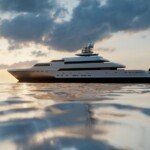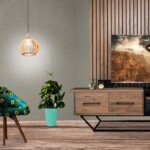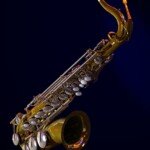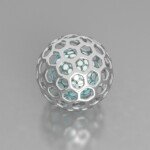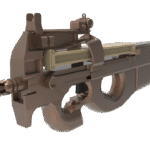Carving the Impossible: When Octopus Meets Rock in Metal Wonders
Imagine a mythical creature—part ancient stone monument, part living cephalopod—whose tentacles intertwine with geological formations, frozen in a timeless dance of nature and art. This is not a figment of fantasy or a lost wonder of the world; This is "rock top," A stunning testament to the power of modern change Metal 3D printing. More than just a sculpture, Rocktopus embodies the liberation of design complexity previously impossible through traditional manufacturing means.
The lure of complexity: Why traditional approaches failed to make Rocktopus a success
Imagine using subtractive methods (such as CNC machining) or traditional casting to create Rocktopus. The intricate organic interplay between the octopus’s soft tentacles and the rock’s jagged, porous texture presents an almost insurmountable challenge:
- Tool access nightmare: Cutting tools simply cannot reach the deep undercuts and complex internal geometries created by weaving tentacles around rock features.
- Assembly overload: Creating each tentacle and rock section individually for assembly would be time-consuming, expensive, and would result in visible seams that ruin the illusion of seamlessness.
- Compromise on details: Capturing the fine details of suckers, skin textures, and natural rock erosion with sufficient fidelity would be extremely difficult and expensive.
- Material restrictions: Achieving the required weight, surface finish and durability may require complex multi-material processes unique to traditional metalworking.
This is how advanced metal 3D printing is Powder Bed Fusion (PBF) Technology Technologies such as Selective Laser Melting (SLM) or Direct Metal Laser Sintering (DMLS) are the ultimate enablers.
“Metamorphosis”: Using metal 3D printing to realize Rocktopus
Making Rocktopus out of metal isn’t magic, but it takes advantage of the core superpowers of additive manufacturing:
- Digital Genesis: The journey begins with a highly detailed 3D model. Professional CAD software or sculpting tools give designers complete freedom to digitally blend organic and geological forms. Every curve, crack and texture is precisely defined. This digital file is the blueprint.
- Layers of revolution: The 3D printer translates digital Rocktopus slices into micron-thin slices. A high-power laser or electron beam selectively fuses fine metal powder particles (such as titanium, stainless steel, aluminum, or even cobalt-chromium alloys) precisely where designed. This process occurs layer by layer, gradually building the fully integrated Rocktopus structure from the bottom up.
- Conquer complexity: Crucially, the printer doesn’t care about overhangs or internal cavities. The support structure is printed with the part and subsequently removed, maintaining the overhanging features during the build process. This allows a complex tangle of tentacles and rock voids to be formed in a single continuous piece of metal.
- Material mastery: Choosing the right metal alloy is key. Is rigidity the most important thing? Titanium alloys have an excellent strength-to-weight ratio. Need corrosion resistance? Available in stainless steel or Inconel. Metal 3D printing enables the use of these high-performance materials in complex geometries not possible with other methods.
GreatLight: Breathing metallic life into vision like Rocktopus
Transforming a complex digital marvel like Rocktopus into a tangible, durable metal object requires not just technology, but a deep technical foundation expertise. where is this huge light Difference:
- Cutting Edge Arsenal: We have a fleet of state-of-the-art metal 3D printers capable of handling the most demanding builds, ensuring high precision, repeatability and the ability to produce at scale.
- Engineering partners: Our team of experienced engineers does more than just “print.” We worked closely on Design for Additive Manufacturing (DfAM) to optimize Rocktopus files for structural integrity, minimize the use of supports, and ensure manufacturability without sacrificing artistic vision.
- Beyond Printing: Superior Post-Processing: Original printed metal parts require finishing to meet aesthetic and functional requirements. Gretel offers a comprehensive Post-processing services – Complex support removal, various surface treatments (polishing, sand blasting, texture application), heat treatments (stress relief, annealing, HIP) and precision machining of critical interfaces. We provide real One stop solution.
- Material Versatility and Rapid Customization: Need aerospace grade titanium Rocktopus? Heat-resistant Inconel? Or maybe a custom alloy? We can source and process various metal powders. Combined with our rapid prototyping and production capabilities, rapid iteration and customization are possible – no project is too unique.
- Accuracy guaranteed: We know that objects like Rocktopus are often as much art as engineering. Our strict quality control measures and precision machining capabilities ensure that the final product meets precise dimensional tolerances and aesthetic standards.
Why choose metal 3D printing for yourself "The eighth wonder"?
Rocktopus embodies the benefits that drive adoption:
- Unleash design freedom: Capture organic shapes, complex lattices, integrated components and complex textures that were previously impossible. Your imagination is the limit.
- Lightweight without sacrificing: Create strong, complex structures with internal cavities that minimize weight – critical for aerospace, automotive or just practicality.
- Rapid prototyping and customization: Rapidly iterate on designs or produce one-off, highly customized pieces such as custom artwork, architectural features or specialized components.
- Material efficiency: Additive methods use only the material required for parts and supports, reducing waste compared to subtractive processes.
- Performance materials: Use high-strength, heat-resistant or biocompatible metals with optimal geometry.
Conclusion: From Myth to Metal Reality
this "rock top" More than just a sculpture; it’s a powerful symbol of how metal 3D printing can break the limitations of traditional manufacturing. It represents the ability to seamlessly blend art and science, complexity and functionality, all in one solid piece of metal. this "The eighth wonder" It’s not a relic of the past; it’s a beacon illuminating the future of manufacturing. For designers, engineers and artists who push boundaries, advanced metal 3D printing Gretel’s technical expertise, advanced capabilities and comprehensive servicesproviding the key to turning once-impossible visions into stunning metallic realities. Stop imagining the impossible— Customize your precision metal parts today and bring your own wonder to life with GreatLight.
FAQ: Metal 3D Printing and Rocktopus
Q1: What exactly is a "rock top"?
Answer: Yes "rock top" is a concept or artwork designed to demonstrate the capabilities of metal 3D printing. It represents a complex blend of natural elements – specifically the octopus seamlessly integrated into the rock formations. Its complex organic and geometric shapes highlight the ability to fabricate previously impossible structures.
Q2: Can I actually Want to get something like the GreatLight 3D metal printed Rocktopus?
Answer: Of course! While Rocktopus is a high-profile example, it represents type Ferrite specializes in producing complex geometries. If you have a detailed 3D model (STL, STEP, etc.), whether it’s a work of art, an architectural feature, or a highly complex functional component, GreatLight has the advanced metal 3D printers and engineering expertise to manufacture it.
Question 3: What metals can be used to print something as complex as Rocktopus?
A: GreatLight works with a variety of metal powders and is suitable for demanding projects including:
- Titanium alloy (Ti6Al4V): High strength, lightweight and biocompatible.
- Stainless steel (316L, 17-4PH): Excellent corrosion resistance and strength.
- Aluminum alloy (AlSi10Mg): Good strength to weight ratio, thermal properties.
- Nickel alloy (Inconel 625, 718): Excellent high temperature resistance and corrosion resistance.
- Cobalt Chromium Alloy: High wear resistance and biocompatibility. Material selection depends on the properties required for your specific project (strength, weight, heat resistance, corrosion, aesthetics).
Q4: How strong and durable is the metal Rocktopus?
A: Metal parts manufactured using powder bed fusion (such as SLM/DMLS) can achieve close to full density. When combined with appropriate heat treatment, such as Hot Isostatic Pressing – HIP from GreatLight, they exhibit mechanical properties that rival and sometimes exceed those of conventionally manufactured parts. Selecting the appropriate metal alloy ensures durability for decorative displays, structural components or demanding industrial applications.
Q5: How long does it take to 3D print such a complex metal part and what is the finishing like?
A: Printing time depends greatly on part size, complexity and selected machine parameters, ranging from a few hours to a few days. Crucially, GreatLight offers Integrated post-processing. This includes necessary steps such as support removal, heat treatment to optimize performance, and various finishing options (sanding, polishing, sandblasting, texturing) performed in-house to achieve a complete, high-quality end product. We provide a clear timeline as part of the project quote.
Q6: Is metal 3D printing cost-effective for something like this?
A: For highly complex, customized, or low- to mid-volume production products like Rocktopus, metal 3D printing is typically more More cost effective than traditional methods. Cost savings come from eliminating expensive tooling, reducing complex assembly steps, minimizing material waste and accelerating time to market for unique designs. It enables designs that would otherwise not be economically feasible.
Q7: I have an existing part that requires complex metal components. Even if it’s not Rocktopus, can GreatLight help?
one: Of course, this is our core expertise. GreatLight specializes in solving your challenging metal part manufacturing problems. Whether optimizing existing designs to achieve additional benefits (lower weight, higher performance, part integration), prototyping complex components, or producing end-use parts across industries (aerospace, medical, automotive, industrial, consumer goods), our advanced metal 3D printing capabilities and engineering support provide solutions. Contact us today to discuss your specific precision machining needs.


